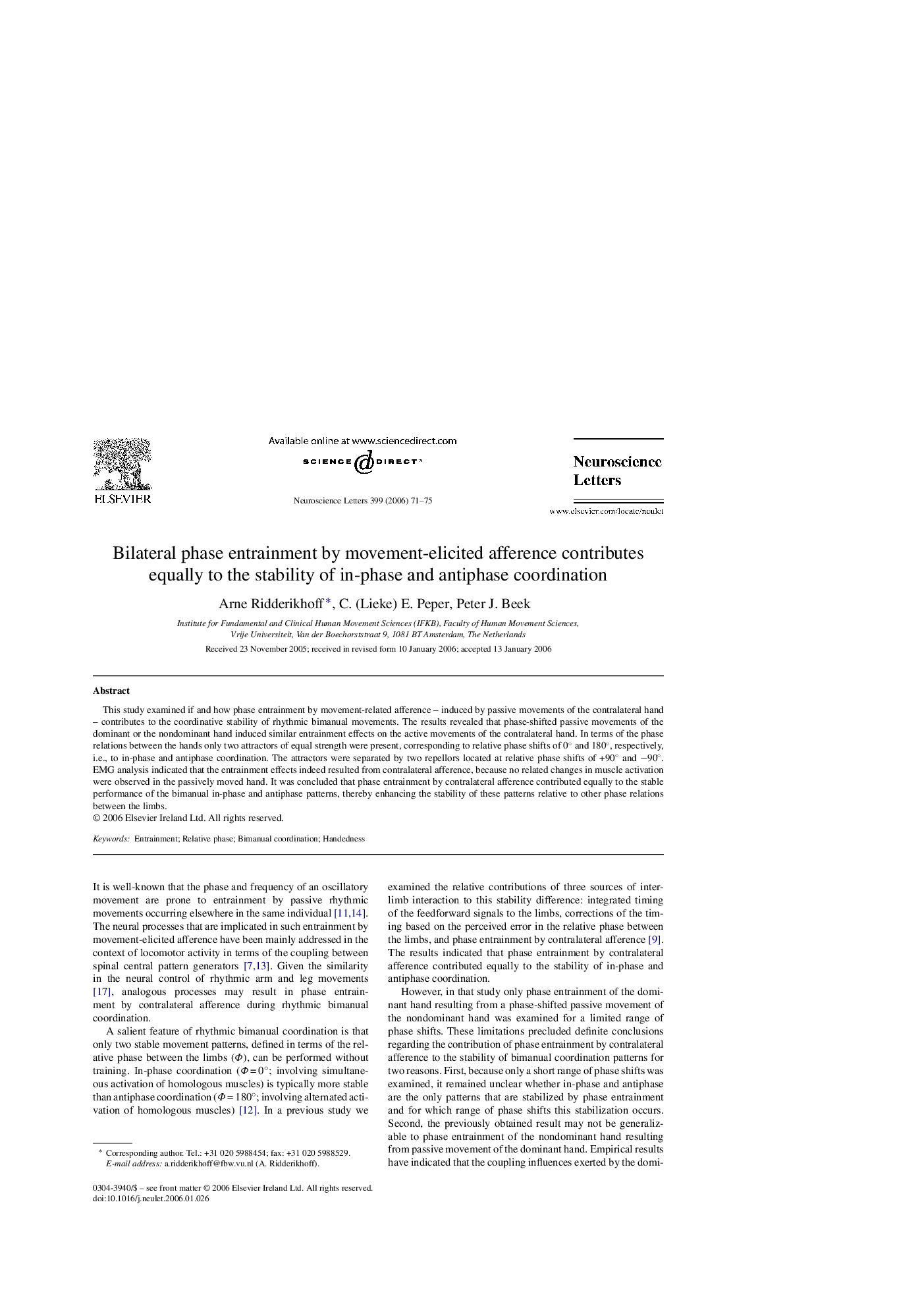| کد مقاله | کد نشریه | سال انتشار | مقاله انگلیسی | نسخه تمام متن |
|---|---|---|---|---|
| 4350700 | 1615193 | 2006 | 5 صفحه PDF | دانلود رایگان |

This study examined if and how phase entrainment by movement-related afference – induced by passive movements of the contralateral hand – contributes to the coordinative stability of rhythmic bimanual movements. The results revealed that phase-shifted passive movements of the dominant or the nondominant hand induced similar entrainment effects on the active movements of the contralateral hand. In terms of the phase relations between the hands only two attractors of equal strength were present, corresponding to relative phase shifts of 0° and 180°, respectively, i.e., to in-phase and antiphase coordination. The attractors were separated by two repellors located at relative phase shifts of +90° and −90°. EMG analysis indicated that the entrainment effects indeed resulted from contralateral afference, because no related changes in muscle activation were observed in the passively moved hand. It was concluded that phase entrainment by contralateral afference contributed equally to the stable performance of the bimanual in-phase and antiphase patterns, thereby enhancing the stability of these patterns relative to other phase relations between the limbs.
Journal: Neuroscience Letters - Volume 399, Issues 1–2, 15 May 2006, Pages 71–75